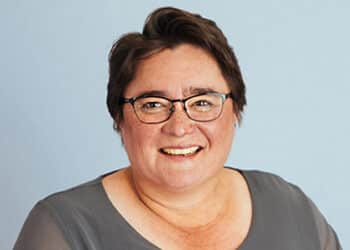Q. What is your business profile, do you cater to professionals and individuals?
We have 5500-6000 professional firms and we also have about 1200 individual trustees using our software.
We produce software for SMSFs and we produce software that handles their corporate compliance or all the ASIC requirements. They’re the two major products we have.
If we were breaking up our revenue it’s probably about 80 per cent software and software subscriptions and about 20 per cent training.
Q. What are your plans for the business, are you targeting new client segments or have any plans to change or grow?
We’re releasing web versions of our existing software applications… to give our clients more flexibility with what they do. In terms of our plans for expansion, we’re not looking at adding any new products, but what we’re looking for is ways that we can add value to our clients by adding services around our existing [offerings].
Q. Has the growth of the SMSF sector affected BGL’s business?
I think the growth of SMSFs has helped our business. When we started in self-managed super back in 1997, there were about 150-180 000 funds, now there’s [approximately] half a million. So that’s certainly helped our business to grow and [sell] more software and more services.
[Moving forward], there’s a lot of areas [related to SMSFs] where we’re looking at what we can do to provide our clients with more functionality and with easier access to services that they need for their funds.
Q. How much of an effect has cloud computing had on your business in recent times, is there a demand for it from SMSF clients?
There’s certainly a demand for [our] clients to provide information to their clients over the web. We [had] web products back in the early 2000s… since then we developed a portal and we have something like 60,000 or 70 000 entities in the portal.
The [area] that we see huge growth from the cloud side for SMSFs is to provide clients with more up to date reporting. While there are a number of other cloud packages out there, none of them really seem to have pushed much further than the administrator – the software isn’t being pushed out to the clients or to the trustee to get their information on a daily basis. That’s I think where [SMSFs] will trend over the next ten years.
Q. Is BGL still moving towards the ideal of the paperless SMSF, has there been any success?
Very much so, and clients that are using the portal are using it because it provides a paperless solution. Certainly that’s something that we’re pushing quite heavily with the web product, our web product will allow [clients] to be paperless, because everything can be sorted electronically, accessed electronically [and] digitally signed.
That’s certainly something that we see as a future for SMSFs. The stumbling block at the moment really is where there is still a legal need for paper… but I think that’s starting to change as time goes on. The whole perception that you need to have paper is changing.
Q. What about when it comes to the more complex assets like collectibles? How do you automate that process?
It’s probably difficult to automate the buy and sell process for collectibles, but it is possible for the documentation to be stored within the software so it’s available to the auditor or available to the administrator or the trustee.
Q. How much do you think clients and the industry rely on service providers such as BGL for support in compliance issues?
Certainly our clients rely on us to ensure that the software complies with the law. Over the years we’ve had numerous discussions with [regulators]… to try and ensure that we process things the way that the [regulator] expects them to be processed – including things like capital gains and pension income.
Q. How difficult is it to stay on top of legislative changes around super?
It’s not that difficult because we’ve been doing it for such a long time. We’ve got very good contacts in the Australian Tax Office (ATO), we keep abreast of what the regulators are doing. We deal with all the professional organisations… in terms of compliance issues where we think it’s necessary.
We have people who have the responsibility to ensure the products comply and they make sure that they keep up to date with all the changes and things that are happening.
Q. The growth of the SMSF industry is predicted to continue, what kind of challenges and opportunities does that present for BGL?
I think there’s a number of opportunities. [With] the products that we’re building for the future, we’re building those products to be scalable to handle hundreds of thousands of funds.
If every one of our clients today converted every single fund they’ve got from the desktop to the web, there’d be over six billion transactions. So from our perspective we’ve got to ensure that we provide systems that can handle the volume of funds that we’re going to have in the future.
If the industry continues the way that it is… in five years from now we’ll have close to 700 000 [funds]… from BGL’s perspective, we need to be able to provide a platform to support at least half a million of those.
That’s really what we’re looking to build; something that will allow our clients to expand fully, to add more funds, and as the industry grows, for us to support more funds.


